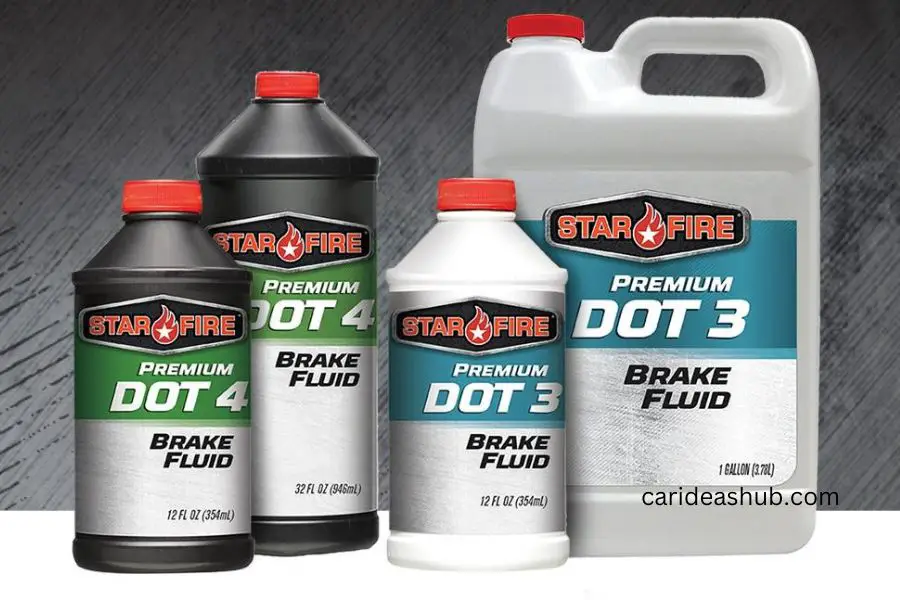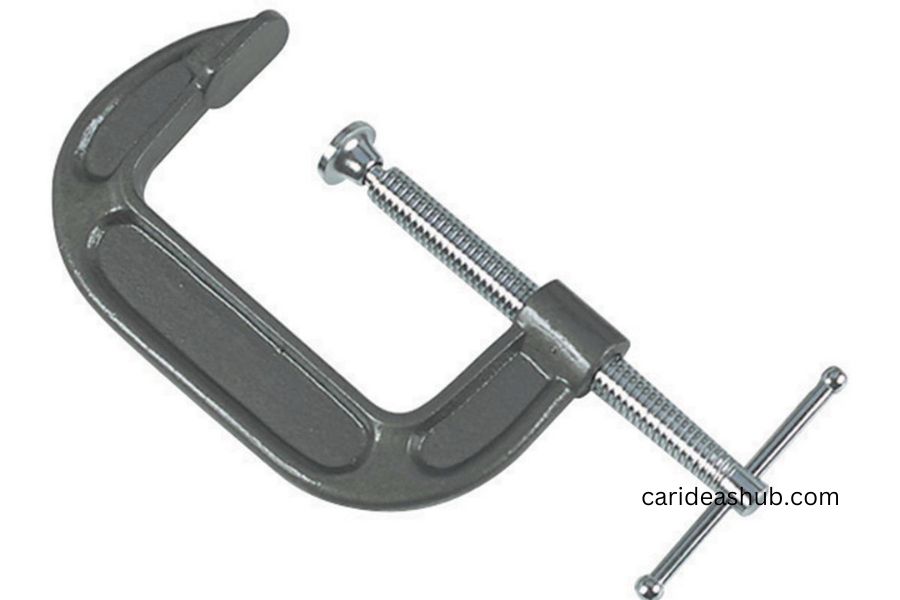C Clamp for Brakes can be used to compress brake calipers and is a necessary tool for changing brake pads.

How C Clamp Works
A C Clamp is a versatile tool used in various applications, including brake repairs. Understanding how a C Clamp works can help you efficiently compress brake caliper pistons and reap the benefits of using this tool for your brake repairs.
Compressing Brake Caliper Pistons
When it’s time to replace your brake pads or make other brake-related repairs, one crucial step is compressing the brake caliper pistons. The C Clamp comes in handy for this task. By placing the C Clamp strategically and using controlled pressure, you can push the caliper pistons back into the caliper bore.
The process begins by positioning a piece of wood or a brake pad against the caliper piston. This prevents metal-on-metal contact and protects the caliper finish. Next, place the C Clamp over the wood or brake pad and the caliper piston. Slowly tighten the C Clamp, and you will notice the caliper piston being compressed back into the caliper bore.
It is crucial to proceed carefully and evenly when using the C Clamp to avoid damaging the caliper assembly. Once the piston is fully compressed, you can carefully remove the C Clamp and the wood or brake pad. This enables you to proceed with the rest of your brake repairs, ensuring a safe and functional braking system.
Benefits Of Using C Clamp For Brake Calipers
The use of a C Clamp for compressing brake caliper pistons offers several benefits:
- Cost-effective: A C Clamp is an affordable tool that can be used for various applications, making it a cost-effective addition to your toolkit.
- Improved efficiency: Compressing brake caliper pistons with a C Clamp saves time and effort, enabling you to complete brake repairs more efficiently.
- Universal usage: A C Clamp can be used on most brake calipers, making it a versatile tool suitable for various vehicle models.
- Ease of use: The straightforward design of a C Clamp makes it easy to handle, even for individuals with limited mechanical experience.
By using a C Clamp for your brake repairs, you can ensure proper compression of the caliper pistons and enjoy these benefits, ultimately contributing to a safer and smoother driving experience.

Selecting The Right C Clamp
When it comes to brake maintenance, having the right tools is essential. One tool that you’ll need for various brake jobs is a C clamp. C clamps are versatile tools that can be used to compress the brake caliper piston, making it easier to replace brake pads or perform other brake repairs. However, not all C clamps are created equal, so it’s important to select the right one for your specific needs.
Different Sizes And Types
C clamps come in different sizes and types, so it’s important to choose one that is suitable for the job at hand. The size of the C clamp refers to the maximum width of the C-shaped frame. It’s important to select a C clamp that can accommodate the size of your brake caliper. Using a C clamp that is too small may not provide enough pressure to compress the brake caliper piston effectively.
Additionally, there are different types of C clamps available. The two most common types are regular C clamps and locking C clamps. Regular C clamps have a fixed throat depth and require manual adjustment to fit the desired width. Locking C clamps, on the other hand, have a built-in mechanism that allows for quick and secure adjustment. Locking C clamps are often preferred for brake jobs as they provide a more stable and secure grip on the brake caliper.
Considerations For Choosing The Right C Clamp
When selecting a C clamp for brake repairs, there are a few important considerations to keep in mind:
- Throat depth: The throat depth of the C clamp refers to the distance from the top of the screw to the bottom of the frame. A deeper throat depth allows for a wider range of applications, so it’s beneficial to choose a C clamp with a sufficient throat depth for your needs.
- Strength and durability: Brake calipers require considerable force to compress the pistons, so it’s important to choose a C clamp that is strong and durable. Look for clamps made from high-quality materials, such as steel, that can withstand the pressure required for brake jobs.
- Comfort and ease of use: Since brake jobs can often be time-consuming, it’s important to choose a C clamp that is comfortable to use. Consider features such as ergonomic handles and smooth screw operation to ensure a comfortable and efficient experience.
By considering these factors and selecting the right C clamp for your brake jobs, you can ensure that you have the necessary tool to safely and effectively compress the brake caliper piston. Remember, proper maintenance and repair of your brakes are important for ensuring optimal performance and safety on the road.
Using C Clamp For Brake Maintenance
When it comes to brake maintenance, using a C clamp is an essential process for compressing brake calipers. Proper compression of brake calipers is crucial in ensuring the safe and efficient performance of your vehicle’s braking system. Whether you’re replacing brake pads, rotors, or working on other brake components, using a C clamp is a cost-effective and straightforward method for compressing brake calipers. Let’s explore the steps for compressing brake calipers and important safety measures to follow when using a C clamp.
Steps For Compressing Brake Calipers
- Loosen the lug nuts of the wheel using a lug wrench and lift the vehicle using a jack and secure it with jack stands.
- Remove the brake caliper by unfastening the caliper bolts and carefully hang the caliper using a wire hanger to prevent damage to the brake line.
- Position the C clamp over the wood or brake pad and the caliper piston.
- Slowly tighten the C clamp, which will compress the piston back into the caliper bore.
- Once the piston is fully compressed, carefully remove the C clamp and wood or brake pad.
Safety Measures While Using C Clamp
- Before using the C clamp, ensure that the vehicle is securely lifted and supported by jack stands to prevent accidents.
- Always wear protective eyewear and gloves to shield yourself from any debris or brake fluid splatter during the compression process.
- Inspect the condition of the C clamp before use and ensure it is in good working condition without any cracks or damage.
- Once the compression is complete, double-check the positioning of the caliper and ensure all the components are securely fastened before testing the brakes.

Alternatives To C Clamp
When it comes to compressing brake calipers, a C clamp is often the go-to tool. However, there are alternative methods and tools that can be used to achieve the same result. These alternatives offer different options for those who may not have a C clamp on hand or prefer a different approach. Let’s explore two common alternatives to a C clamp: the caliper spreader tool and other methods for compressing brake calipers without a C clamp.
Caliper Spreader Tool
A caliper spreader tool, also known as a caliper piston compressor, is a specialized tool designed specifically for compressing brake calipers. It features a sturdy construction that allows it to exert pressure evenly on the caliper pistons, ensuring a smooth compression process. The tool is easy to use and provides a reliable way to compress the brake caliper without the need for a C clamp.
Methods For Compressing Brake Calipers Without C Clamp
While a C clamp and caliper spreader tool are commonly used for compressing brake calipers, there are other methods that can be employed in their absence. Here are a few alternatives:
- Using a pry bar or screwdriver: Carefully insert a pry bar or screwdriver between the brake pad and rotor, then gently apply pressure to push the caliper piston back into the caliper bore. Be mindful not to damage the brake pad or rotor during this process.
- Using a brake pedal depressor tool: This tool is designed to push the brake pedal down and keep it in the depressed position, effectively compressing the brake caliper pistons. This method requires an extra person to operate the tool while you work on the caliper.
- Using a vise: If you have access to a vise, you can secure the caliper between the vise jaws and slowly tighten the vise to compress the caliper pistons. This method requires caution to ensure the caliper is held securely and the compression is done evenly.
These alternatives can be useful when a C clamp is not available or if you prefer a different approach. However, it’s important to exercise caution and follow proper safety procedures when performing any brake-related tasks. If you’re unsure or uncomfortable with the process, it’s best to consult a professional mechanic.
Frequently Asked Questions On C Clamp For Brakes
Can I Use C-clamp For Brakes?
Using a C-clamp for brakes is a common method to compress the piston back into the caliper bore during brake pad replacement. Position the C-clamp over the wood or brake pad and the caliper piston, then slowly tighten the clamp until the piston is fully compressed.
Remove the clamp and wood or brake pad carefully afterwards.
Do You Need Ac Clamp To Change Brakes?
Yes, a C-clamp or caliper spreader tool is needed to change brakes. It’s used to compress the caliper piston back into the caliper bore.
How Do You Push A Brake Caliper Back Without A C-clamp?
To push a brake caliper back without a C-clamp, you can use a brake pad spreader tool or a wooden block. Position the tool or block over the caliper piston and slowly compress it back into the caliper bore. Be careful and remove the tool or block once the piston is fully compressed.
How Do You Compress A Brake Caliper With A C-clamp?
To compress a brake caliper with a C-clamp, position the C-clamp over the wood or brake pad and the caliper piston. Tighten the C-clamp slowly to compress the piston back into the caliper bore. Once fully compressed, remove the C-clamp and wood or brake pad carefully.
Conclusion
Using a C-clamp for brakes can simplify the process of compressing the caliper piston. It’s a cost-effective and efficient tool, readily available in various stores. For individuals undertaking DIY brake maintenance, a C-clamp is a valuable addition to their toolkit and can aid in the smooth execution of brake pad changes.

